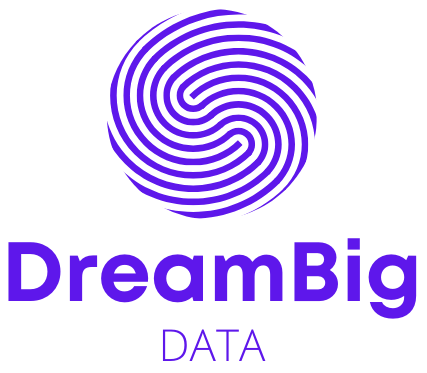In today’s fast-moving global markets, supply chains are more complex than ever. Big data and AI have revolutionized how companies predict, plan, and optimize their supply chains, leading to reduced costs, faster deliveries, and improved customer satisfaction.
By leveraging data-driven models, businesses can gain unprecedented insights across every supply chain stage—from demand forecasting to inventory management and logistics. Here are 13 crucial insights into how big data and AI are reshaping supply chain optimization.
1️⃣ Demand Forecasting with Real-Time Accuracy 📈
One of the most transformative uses of AI and big data is real-time demand forecasting. Traditional forecasting methods relied on historical sales data, but AI models can now analyze multiple data sources simultaneously, including:
- Market trends and consumer behavior patterns
- Weather conditions impacting demand (e.g., higher ice cream sales in heatwaves)
- Global events such as supply disruptions or economic shifts
Benefits:
- Reduces stockouts and overstocking by anticipating demand fluctuations more accurately
- Helps businesses make better decisions about production, staffing, and logistics
- Enables faster response to changing conditions, improving agility
💡 DreamBigData Tip: Implement continuous data integration from external sources (like industry trends) to fine-tune forecasting and adjust plans in real-time.
2️⃣ Dynamic Inventory Optimization 🏢
Big data-driven AI models provide dynamic inventory optimization by monitoring supply and demand in real-time. Traditional inventory models often fail to account for rapid shifts in market conditions, but AI algorithms can predict optimal stock levels and adjust on the fly.
How it works:
- AI analyzes sales patterns, supplier lead times, and inventory turnover rates.
- It can identify seasonal trends and automatically adjust replenishment schedules.
- Predictive algorithms reduce the risk of excess inventory, freeing up capital while ensuring critical products stay in stock.
Benefits:
- Cuts carrying costs by reducing excess inventory
- Improves cash flow by maintaining leaner inventory
- Enhances customer satisfaction by minimizing delivery delays
💡 DreamBigData Tip: Use AI models that can segment inventory by profitability, demand variability, and lead time, allowing for tailored stock management strategies.
3️⃣ Route Optimization for Logistics and Distribution 🚚
Efficient logistics and distribution are crucial for supply chain success, and big data-powered AI can optimize delivery routes in ways that human planners can’t. These models analyze traffic patterns, fuel costs, driver availability, and even weather forecasts to calculate the most efficient routes in real-time.
How it works:
- AI evaluates multiple factors, such as delivery windows, shipping costs, and warehouse locations, to generate optimized route plans.
- Algorithms can dynamically reroute trucks during traffic delays or emergencies, ensuring minimal downtime.
- AI models also account for vehicle capacity utilization, maximizing load efficiency on each trip.
Benefits:
- Reduces fuel consumption and transportation costs
- Speeds up last-mile delivery, improving customer experience
- Lowers carbon emissions, supporting sustainability goals
💡 DreamBigData Tip: Integrate real-time fleet tracking systems with AI route optimization models to ensure continuous adjustments based on real-world conditions.
4️⃣ Supplier Performance Analytics 🔍
AI-driven big data models can analyze supplier performance to identify strengths, weaknesses, and risks. Instead of relying solely on price and delivery time, businesses can assess suppliers based on multiple data points such as:
- On-time delivery rates
- Product defect rates
- Lead time variability
- Supplier compliance with quality and sustainability standards
How it works:
AI models continuously monitor supplier data and flag potential risks before they escalate. For example, if a supplier’s lead times increase, the system can recommend alternative vendors or adjust production schedules.
Benefits:
- Improves supplier relationships by offering data-driven feedback
- Reduces risk of supply chain disruptions
- Helps negotiate better contracts with high-performing suppliers
💡 DreamBigData Tip: Regularly score suppliers using AI-driven KPIs to proactively mitigate risks and maintain supply chain resilience.
5️⃣ Predictive Maintenance for Equipment Reliability ⚙️
Supply chain disruptions often result from equipment failures in manufacturing plants or distribution centers. Big data and AI enable predictive maintenance, identifying signs of equipment failure before breakdowns occur.
How it works:
- AI collects data from sensors and IoT devices that monitor equipment (e.g., temperature, vibration, and wear).
- Machine learning models detect patterns that indicate potential failure points.
- Maintenance teams receive alerts to schedule repairs before costly downtime happens.
Benefits:
- Reduces unplanned downtime and production delays
- Extends equipment lifespan through timely maintenance
- Lowers maintenance costs by avoiding catastrophic failures
💡 DreamBigData Tip: Use integrated dashboards that provide real-time visibility into machine health, empowering operators to make data-driven maintenance decisions.
6️⃣ Real-Time Risk Management 🚨
Supply chains face a wide range of risks, including natural disasters, political instability, cyberattacks, and pandemics. AI and big data models can predict and mitigate risks by analyzing global events, news, and historical patterns.
How it works:
- AI systems monitor external data sources (e.g., global news feeds, government alerts, weather forecasts) to detect potential risks.
- Predictive models calculate the impact of these risks on inventory, suppliers, and transportation networks.
- Businesses receive actionable recommendations, such as stockpiling critical components or rerouting shipments.
Benefits:
- Enables faster decision-making in response to emerging threats
- Minimizes financial losses from supply chain disruptions
- Improves resilience by identifying vulnerabilities before they cause issues
💡 DreamBigData Tip: Implement AI-driven scenario simulations to test various risk responses and develop contingency plans ahead of time.
7️⃣ End-to-End Supply Chain Visibility 📡
One of the biggest challenges in supply chain management is the lack of transparency across multiple stages, from sourcing to final delivery. AI and big data models provide real-time visibility into every link in the supply chain, ensuring that businesses can track and manage inventory, shipments, and performance at every step.
How it works:
- AI integrates data from suppliers, warehouses, logistics providers, and retailers into a single platform.
- Machine learning identifies delays, bottlenecks, or inefficiencies, allowing businesses to take corrective action immediately.
- Advanced analytics provide predictive insights to optimize workflows.
Benefits:
- Enables faster decision-making with real-time updates
- Reduces errors and delays caused by communication gaps
- Enhances collaboration among stakeholders in the supply chain
💡 DreamBigData Tip: Use AI platforms with real-time dashboards to give key decision-makers access to a 360-degree view of the entire supply chain.
8️⃣ Customer Demand Sensing 📊
Traditional demand planning relies on historical sales data, but AI-powered demand sensing can anticipate changes in real-time by analyzing data from multiple sources, such as social media trends, news events, and online search behavior.
How it works:
- AI models identify emerging demand patterns by monitoring real-time sales and external factors.
- Companies can adjust production schedules, marketing campaigns, or inventory levels based on demand shifts.
- Predictive insights allow businesses to capitalize on demand spikes and avoid stockouts or overproduction.
Benefits:
- Increases forecast accuracy by considering real-time data instead of just historical trends
- Reduces lost sales opportunities due to stockouts
- Improves customer satisfaction by meeting demand quickly and efficiently
💡 DreamBigData Tip: Integrate real-time demand sensing with marketing strategies to quickly respond to customer behavior shifts.
9️⃣ Automated Procurement with AI 🤖
Procurement processes can be time-consuming and prone to delays, especially when dealing with multiple suppliers. AI and big data models enable automated procurement, streamlining supplier selection, contract management, and purchasing decisions.
How it works:
- AI models analyze supplier performance, prices, and delivery times to recommend the best vendors for each order.
- Automation tools handle purchase order generation, approvals, and tracking.
- Machine learning continuously optimizes procurement strategies based on historical spending patterns and market conditions.
Benefits:
- Reduces administrative workload for procurement teams
- Improves negotiation outcomes by leveraging real-time data
- Ensures cost savings through dynamic vendor comparisons and bulk discounts
💡 DreamBigData Tip: Implement AI-driven procurement bots that handle routine tasks, freeing up procurement professionals to focus on strategic supplier relationships.
🔟 Inventory Rebalancing Across Multiple Warehouses 🏬
Managing inventory across multiple locations can be challenging, especially when demand varies by region. AI models enable dynamic inventory rebalancing, ensuring stock is optimized between warehouses based on current and forecasted demand.
How it works:
- AI tracks inventory levels in real-time and compares them with demand trends for each warehouse.
- When one location is overstocked and another faces shortages, the system recommends reallocating stock between facilities.
- Predictive models can preemptively redistribute inventory to match seasonal or regional demand spikes.
Benefits:
- Minimizes stockouts and overstocking
- Reduces inter-warehouse shipping costs
- Enhances order fulfillment speed and accuracy
💡 DreamBigData Tip: Use AI to segment products by turnover rates and regional demand, optimizing inventory distribution to reduce excess shipping.
1️⃣1️⃣ Sustainability and Carbon Footprint Tracking 🌱
As sustainability becomes a key focus for businesses, AI helps optimize supply chains to reduce environmental impact. Big data models can track carbon emissions, waste, and energy use across the entire supply chain and recommend eco-friendly alternatives.
How it works:
- AI analyzes logistics routes, packaging choices, and supplier practices to find opportunities for emissions reduction.
- Predictive models calculate carbon offsets for unavoidable emissions and recommend greener solutions.
- Companies can use this data to report on ESG (Environmental, Social, Governance) compliance, improving transparency for investors and customers.
Benefits:
- Supports sustainability goals while improving operational efficiency
- Helps attract eco-conscious customers and investors
- Reduces regulatory risks related to environmental compliance
💡 DreamBigData Tip: Leverage AI-powered tools that provide real-time tracking of carbon emissions per shipment or facility, enabling targeted sustainability improvements.
1️⃣2️⃣ Pricing and Cost Optimization 💵
AI models enable dynamic pricing and cost optimization, helping businesses adjust pricing strategies based on market demand, supplier costs, and competitor behavior. This ensures profitability even when raw material or logistics costs fluctuate.
How it works:
- AI tracks changes in commodity prices, supplier contracts, and global trade tariffs to recommend optimal pricing.
- Models can suggest discounts, promotions, or volume-based pricing for different regions or product categories.
- AI continuously evaluates the impact of pricing changes on margins and demand.
Benefits:
- Maximizes profit margins in changing market conditions
- Helps businesses remain competitive by adjusting prices dynamically
- Improves long-term cost forecasting for supply chain budgeting
💡 DreamBigData Tip: Use AI models that link pricing data with demand forecasts to find the perfect balance between revenue growth and customer retention.
1️⃣3️⃣ Supplier Network Diversification 📡
Supply chains are increasingly vulnerable to global disruptions, such as trade restrictions, pandemics, or geopolitical tensions. AI helps businesses diversify their supplier base, reducing the risks of over-dependence on a single region or vendor.
How it works:
- AI models analyze supplier performance, regional risks, and lead times to recommend alternative suppliers.
- Predictive analytics monitor global supply chain risks, such as labor strikes, natural disasters, or trade sanctions, and provide contingency plans.
- Businesses can proactively shift orders to backup suppliers, avoiding costly delays.
Benefits:
- Reduces exposure to supply chain disruptions
- Improves negotiation power by maintaining multiple supplier relationships
- Enhances resilience by maintaining access to critical materials
💡 DreamBigData Tip: Regularly review your supplier portfolio and use AI models to simulate risk scenarios, ensuring you’re prepared for global supply shocks.
Supply chains are becoming smarter, faster, and more resilient thanks to AI and big data. From demand forecasting and inventory optimization to sustainability tracking and risk management, these innovations empower businesses to adapt in real-time and stay ahead of disruptions.
By adopting AI-driven strategies, companies can not only reduce costs and increase efficiency but also improve customer satisfaction and achieve sustainability goals. Are you ready to transform your supply chain with data-powered insights? 📈🚀



